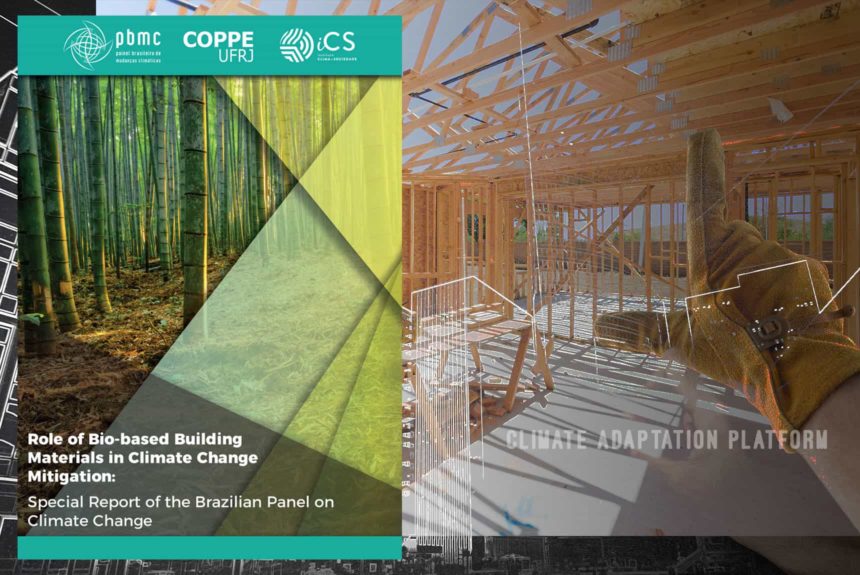Emissions from buildings represent 39% of the global GHG emission. Reducing emissions in buildings will play a critical role to achieve net-zero by 2050 and meeting the Paris climate goals.
Achieving net-zero in buildings will have to start with the building or construction materials, which accounts for 11% of the building’s total emissions. Operational emissions account for 28% of the energy needed to power, cool or heat the buildings.
Experts in green building policy, climate science and architecture experts believe that realizing net-zero buildings is possible and that buildings are potential carbon sinks. Scaling up using bio-based building materials that generally consume less energy during manufacturing and capturing and storing carbon through photosynthesis will help.
The construction of new buildings is projected to double by 2060. Still, only a tiny percentage – 3% of new construction falls under green construction or uses bio-based materials that can lock emissions for decades.
The data shows that increasing investment in green construction and energy-efficient buildings can help scale-up and mainstream the low-carbon materials industry, technologies, and operations.
The Conversation presents examples of net-zero buildings that feature the latest engineering and building operations to improve energy efficiency, apply on-site heating and cooling, waste reduction in material production and building construction, and recycle materials (Siegner & Searcy, 2021).
Bloomberg’s European headquarters has earned the title of the world’s most sustainable office buildings for combining innovative engineering designs and materials to create an energy-efficient building.
The building features led lights integrated into the ceilings, natural ventilation, rainwater capture, treatment, recycling, and combined heat and power system. As a result, the building uses 73% less water and 35% less energy than a typical office building. The video below explains more.
Other buildings that used bio-based construction materials include:
Walmart’s home office in Bentonville, Arkansas, is the largest mass timber campus project in the U.S. The project utilizes 1.7 million cubic feet of regionally-sourced lumber for the structures. Construction of the project will finish in 20 used mass timber. Construction of the buildings will finish by 2025.
Google is also set to finish its first mass timber office complex.
According to the article, the Microsoft building in the Silicon Valley campus uses over 2,100 tonnes of cross-laminated timber (CLT), a wood panel system expected to reach more than $3billion in market size globally within the next five years.
European firms like German retail chain Alnatura use prefabricated loam in their HQ, and BMWs California EV showroom utilizes hemp wood for flooring.
The Journal of the American Institute of Architects’ article, “Sustainable Building Materials for Low Embodied Carbon”, lists low-carbon building materials for roofing, cladding, insulation, and others that can significantly lower the building’s embodied carbon when substituted with conventional materials (Brownell, 2020).
- Hoffman Green Cement’s “H-UKR” uses a new cement formulation made from blast furnace slag, a by-product from steel production. The new product has one-fifth of the carbon footprint of conventional cement but has comparable compressive strength.
- Lamboo Structure. Illinois-based Lamboo sells building framing components such as beams, trusses, and posts made from engineered bamboo. Bamboo is a mega absorber of CO2 and able to capture 80 metric tons of carbon for every hectare grown;
- CalPlant offers MDF panes made from rice straws collected from farms within a 25-mile radius of its plan. According to the company, this biomaterial performs similarly, if not better than wood-fibre based products.
- Kedel’s Recycled Plastic Cladding. The company offers exterior cladding made from recycled high-density polystyrene, which is otherwise destined for the landfill.
- Gutex’s Multitherm is a German manufacturer that makes external thermal insulation systems made from wood fibre which requires less energy to process than traditional ones.
- Rustic Shingle, Metal Roofing System offers aluminium roof shingles made of up to 99% discarded aluminium cans.
- USG’s EcoSmart Wallboard Panels. The panels use 25% less water to manufacture than conventional gypsum wallboards. It is also less energy and resource-intensive than traditional drywall and weighs 25% less than typical wallboard, reducing transport energy.
A study has shown that biobased materials can help mitigate climate change impacts, but to obtain the maximum effect on reducing the buildings’ carbon footprint and embodied carbon, the building and construction sector should incorporate all available climate mitigation strategies (Paiva, Caldas, & Toledo, 2018).
Source:
Siegner, M. & Searcy, C. (2021, December 16). If companies want net-zero carbon offices, they need to focus on building materials. The Conversation. Retrieved from https://theconversation.com/if-companies-want-net-zero-carbon-offices-they-need-to-focus-on-building-materials-173476
Brownell, B. (2020, January 5). Sustainable Building Materials for Low Embodied Carbon. Architect. Retrieved from https://www.architectmagazine.com/technology/products/sustainable-building-materials-for-low-embodied-carbon_o
Nesler, C., Lam, K. & Lasternas, B. (2021, September 8). How to build smart, zero carbon buildings – and why it matters. World Economic Forum. Retrieved from https://www.weforum.org/agenda/2021/09/how-to-build-zero-carbon-buildings/
Paiva, Rayane & Caldas, Lucas & Toledo Filho, Romildo. (2018). Role of Bio-based Building Materials in Climate Change Mitigation: Special Report of the Brazilian Panel on Climate Change.



Leave a Reply